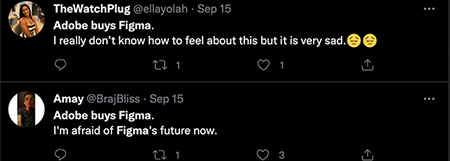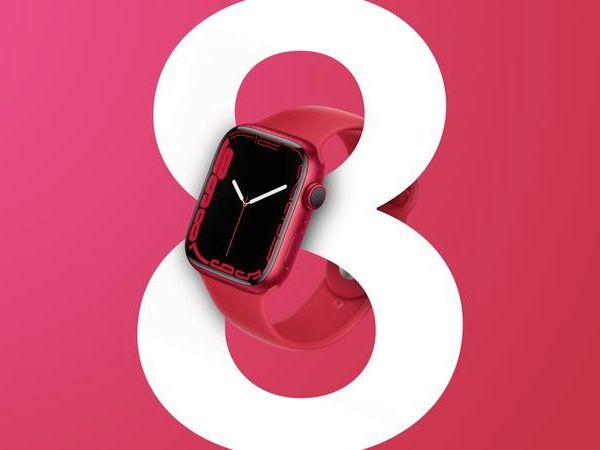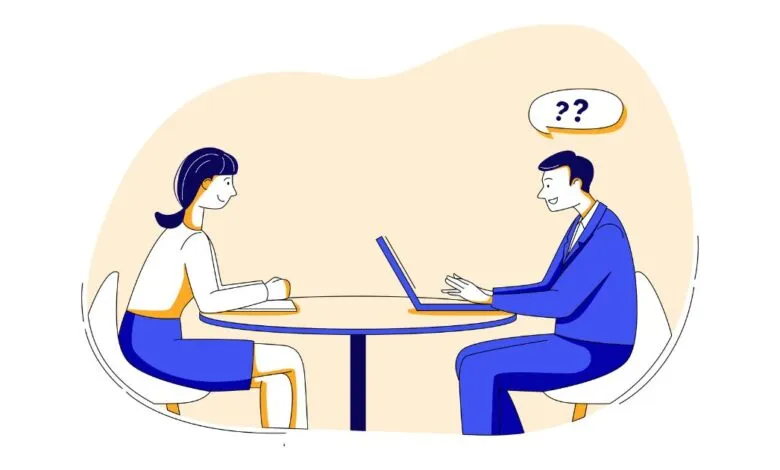Sales coordinators are the backbone to ensure the efficient running of a sales team. Applicants must possess organizational skills, attention to detail, motivation, and a natural ability to handle people, disputes, and contract issues. While sales coordinators are skilled in many CRM databases, human resources representatives should assess candidates’ ability to deal with stress in a fast-paced environment.
If you’re seeking a job in sales, it’s essential to be prepared for the interview. One way to do that is to know what questions to expect. This guide will provide you with the most common sales coordinator interview questions and model answers.
1. In your opinion, what makes a successful sales team?
This question can help the interviewer determine your understanding of what it takes to be successful in a sales role. Use examples from your previous experience or discuss how you would define success as a team member.
Example: “A successful sales team works together and supports each other’s efforts. I think it’s essential for everyone on the team to feel valued, so I try to make sure my coworkers know they’re appreciated. In my last position, we had weekly meetings to discuss our goals and celebrate our successes. This helped us all stay motivated and encouraged us to work harder.”
2. Describe a time when you successfully closed an enormous deal.
This question can help the interviewer understand your sales skills and how you apply them to close deals. Use examples from your previous experience highlighting your ability to work with clients, negotiate contracts and meet deadlines.
Example: “In my last role as a sales coordinator, I worked with a client looking for a new software system to manage their inventory. They were interested in our company’s product because of its advanced features and competitive pricing. After researching the client’s needs, I presented three different options that met their requirements and budget. The client ultimately chose our most expensive option, which helped us increase revenue by 20%.”
3. How do you think technology is changing the sales landscape?
Technology is changing the sales landscape in many ways, and employers want to know how you feel about it. They may ask this question to see if you are familiar with current trends in technology and how they can help your team succeed. In your answer, try to show that you understand how technology has changed the sales industry and what benefits it offers.
Example: “I think technology is changing the sales landscape by making it easier for companies to reach their target audience. For example, I recently worked on a campaign using social media influencers to promote our product. This was much more cost-effective than traditional advertising methods, and it reached a younger demographic who would be interested in our product.”
4. What do you think is the most critical skill for a Sales Coordinator to possess?
This question is your opportunity to show the interviewer that you possess the skills and abilities needed for this role. You can answer by identifying a skill from the job description and explaining how you use it in your daily work.
Example: “I think the most critical skill for a Sales Coordinator is communication. I believe that effective communication is key to ensuring all sales representatives are informed about their client’s needs and any changes or updates within the company. In my previous role, I used my communication skills to ensure everyone was on the same page regarding client information, upcoming meetings, and deadlines.”
5. What do you believe is the best way to generate new sales leads?
This question can help the interviewer determine your sales strategy and how you plan to generate new leads for your company. Your answer should include a few methods that you have used in the past, along with an example of how they worked.
Example: “I believe it’s essential to use multiple lead generation methods to ensure we reach as many potential clients as possible. In my previous role, I helped create a marketing campaign that included social media ads, cold calling, and email outreach. This resulted in over 100 new monthly leads, more than enough to meet our quota.”
6. How would you handle an irritated customer if no sales representative was available?
Because many sales representatives travel, they require the assistance of a sales coordinator who can screen calls and gather information first. It becomes crucial to assess how an applicant would handle a complaint without a sales representative, supervisor, or manager.
What to look for in an answer:
- Deals well under pressure
- Ability to build trust with clients
- Dedication to solving the issue
Example: “I would listen carefully to the customer, gather all the facts, and let the person know I was committed to solving the issue. I would outline the steps I would take and provide an expected time frame for the resolution.”
7. When was the last time you overcame an obstacle in your sales career?
This question can help the interviewer understand how you respond to and overcome challenges. Use your answer to highlight a time when you overcame an obstacle in your career, what the obstacle was and how you overcame it.
Example: “The last time I faced an obstacle in my sales career was when I started working as a sales coordinator for a large company. The company had many different products sold separately, so I found it difficult to track which product each customer wanted. To solve this problem, I created a spreadsheet where I could enter the customer’s information and then pull up the relevant product they needed. This helped me better serve customers and increased my sales.”
8. What CRM databases and software have you used before?
The sales coordinator will spend time managing sales information through the sales funnel, including following up on leads. Initially, this includes contact information and other pertinent details like the level of interest. Still, it could evolve to recording sales interactions and maintaining contracts without a dedicated contracts department. Because of this, experience in CRM databases like Salesforce or Microsoft CRM is needed.
What to look for in an answer:
- Experience with CRM databases
- Ability to take current skills and apply them to new tools
- Willingness to learn new systems if needed
Example: “Most of my experience comes from using Salesforce and Microsoft Excel. I have also used proprietary systems and have a strong understanding of how to apply my knowledge to new systems.”
9. Describe a time when you utilized creative selling techniques to close a deal.
This question can help the interviewer determine your ability to think outside the box and use innovative strategies to close a sale. Use examples from previous work experience or describe how you would approach this situation if it has never happened.
Example: “In my last role, I worked with a client who had been in business for many years but hadn’t tried our company’s services yet. I knew that they were looking for ways to increase their sales, so I offered them a free trial period where we could provide them with marketing advice and see if our services worked for them. After two weeks, they decided to continue using our services because we helped them reach new customers and increased their revenue by 20%. They ended up becoming one of our longest-term clients.”
10. How familiar are you with running reports, and what tools have you used?
This provides a good follow-up question to assess experience with CRM databases. Sometimes, the sales coordinator is responsible for running data queries and sales reports. Depending on the skill set needed and the applicant’s technology claims, this question allows you to verify the information and assess the confidence and sincerity of the reply.
What to look for in an answer:
- Familiarity with tools or formulas used in reports
- Ability to explain data
- Attention to tone
Example: “I am well-versed in Salesforce and running reports from the sales dashboard. I am also familiar with using VLOOKUP, macros, and creating charts in Microsoft Excel to verify and match the data found.”
11. What do you consider to be your strengths and weaknesses when it comes to sales?
This question is an opportunity to show your interviewer that you are self-aware and can use your strengths to overcome weaknesses. When answering this question, it’s essential to be honest about your strengths and weaknesses while demonstrating how you’ve used them to succeed in previous roles.
Example: “I consider my ability to multitask as one of my greatest strengths when it comes to sales. I can manage multiple clients at once, which allows me to provide excellent customer service while still meeting the needs of each client. My weakness would be my lack of experience with CRM software. However, I have taken steps to learn more about these programs to serve my clients better.”
12. What would you do if you made a mistake in a sales contract and needed to smooth things over with a sales representative?
There might be a time when a sales representative or the sales coordinator makes a mistake. This case has no standard answer because the error may have come from the coordinator or the representative. However, a sales coordinator often proves documentation. By asking this question, you can see how an applicant applies critical thinking and conflict-resolution skills.
What to look for in an answer:
- Willingness to move on from the situation
- Conflict-resolution skills
- Ability to admit to a mistake
Example: “While I am detail-oriented, I understand that mistakes occur. I would take ownership, learn from it and take steps to ensure I still have the trust of the sales representative. I apologize for any misunderstandings and reiterate that I aim to support the sales team so the business can flourish.”
13. In your opinion, what are some of the biggest challenges facing sales teams today?
This question can help interviewers understand your knowledge of the sales industry and how you might approach challenges. When answering this question, it can be helpful to mention a specific challenge and explain what you would do to overcome it.
Example: “One of the biggest challenges facing sales teams today is finding qualified leads. With so many companies competing for customers, it’s important to have an effective lead generation strategy in place. I believe one way to solve this problem is by using social media as a marketing tool. For example, suppose we could use social media to target potential clients who are already interested in our product or service. In that case, we could increase our chances of converting them into paying customers.”
14. How would you handle a customer’s dissatisfaction with a product or service?
This question can help the interviewer determine how you handle customer complaints and whether you have experience with handling them. Use your answer to highlight your problem-solving skills, communication ability, and commitment to ensuring customers are satisfied.
Example: “If a customer were not satisfied with a product or service, I would first apologize for their dissatisfaction and ask what they were unhappy about. Then, I would try to resolve the issue by offering an exchange or refund if applicable. If the situation required further assistance from management, I would escalate the issue to my manager so that they could address it.”
15. How do you stay motivated in your sales career?
Employers ask this question to learn more about your work ethic and how you stay motivated in a sales career. They want to know that you can keep yourself motivated when working on projects or tasks, especially if they are looking for someone who can help their team members stay motivated. In your answer, explain what motivates you and share an example of a time when you were able to encourage others.
Example: “I find motivation through my passion for helping people. I love connecting with clients and providing them with solutions to their problems. This is why I became a salesperson in the first place. I also find motivation by setting goals for myself. I like to set weekly, monthly and yearly goals to track my progress and feel accomplished at the end of each day.”
16. What do you consider to be the most critical factor in successfully closing a deal?
This question can help the interviewer determine your sales philosophy and how you approach closing a sale. Your answer can also tell them about your communication skills, problem-solving abilities, and ability to work as part of a team.
Example: “I believe trust is the most important factor in successfully closing a deal. If I don’t have my client’s trust, they won’t feel comfortable enough to buy from my company or me. I listen carefully to their needs and concerns to build trust with clients. This helps me understand what they’re looking for so I can provide solutions that meet their unique needs.”
17. In your opinion, what is the best way to build positive relationships with customers?
This question can help the interviewer determine how you approach customer service and whether your methods align with the company’s values. Use examples from previous experience to show that you value customers’ time, opinions, and needs.
Example: “I believe the best way to build positive relationships with customers is by listening to them and understanding what they need. I always ask questions when I don’t understand something or if a client has additional requests. This helps me provide better service because I can anticipate any concerns before they arise. It also shows customers that I care about their unique situation.”
Moreover, If you’re applying for a sales coordinator position, click here to provide some valuable tips and examples for writing a solid cover letter.
Finally, We hope our guide’s been a useful source for you to be well-prepared for your coming interview. Best of luck!





































